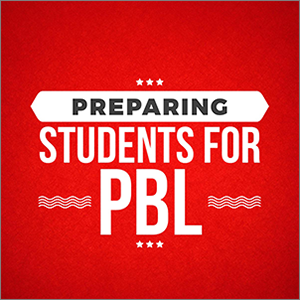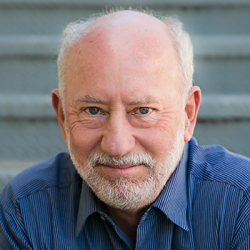
This school year, will your students be experiencing Project Based Learning for the first time? Or do your students need a reset after having “done projects” in the past with mixed results, since now you’re planning to introduce new and improved PBL practices?
Here are some approaches you could take to meet this challenge.
Decision #1 Start by explaining what PBL is and why you’re doing it, or skip the theory and just have students experience a good project?
It’s your call, but even high school students might not be persuaded by abstract arguments, so it might be better to just have students experience an engaging and effective project, then take the time to reflect on the PBL methodology and its benefits after the project. If you do want to explain PBL in advance, the advice below applies mainly to older students, but could be adapted for younger children.
Tips & Resources for Explaining PBL to Students
- Share information with students – or have them do a mini-research assignment to find it themselves – about what employers and colleges want to see in people they hire or admit. Build the case for 21st century success skills, and connect this to how and what they should learn in school (but don’t come on too strong with your own “sales pitch” for PBL). See our post, “How My Project-Based School Prepared Me for Columbia.”
- Show students a video or two about PBL, such as “Project Based Learning: Explained” or “It Really, Actually Changed My Life” or others you find on our website or online.
- Tell stories of engaging, impactful projects other students have done (or preview some that yours will be doing).
- Have a discussion about the most memorable assignments/learning experiences students have done. Connect these experiences with the characteristics of high-quality PBL.
- Help students understand the difference between traditional “projects” and PBL, as shown on the chart in this post and explained in this article. Explain how a PBL unit differs from a traditionally-taught unit, as shown on this graphic.
- If students want to vent about negative experiences they’ve had in the past with “doing projects,” let them—then talk about how the experience could be improved. Let them know how you intend to design and facilitate projects. (Then make sure your first project is highly engaging and well-run!)
- Check out the Buck Institute’s booklet An Intro to Project Based Learning, which is aimed primarily at parents, but older students would also find it helpful for understanding the what and why of PBL, with answers to many FAQs.
- Check out Getting Smart’s “Learning in a Project-Based World: A Quick Start Guide for Students” for ideas on creating student ownership of their learning.
- Teacher Kaitlyn Roberts says, “I began with a discussion on what PBL is and presented it as a challenge where you could really not be wrong, but more so learn from experience. Since it was my first time doing it as well I sold it as, 'Let’s go through this adventure together!'”
- Kindergarten teacher Sara Lev introduces PBL this way: “I talk to them about what "Inquiry" means – so we talk about how an Inquiry Project has a question that is so big, we need to do a project to find out the answer. The first thing we do is make a list of "Big Questions" students have about anything they want, to model what Big Questions might be.”
Decision #2 Start the year with a project, or wait?
This was the topic of a blog post I wrote a few years ago, comparing the “plunge right in” approach vs. the “build skills first” approach. The answer to this question depends on several factors, including your own readiness, the topics of the projects you might have planned in the summer, and your sense of who your students are. (Veteran PBL teachers, I notice, tend to plunge right in.)
Tips & Resources for Starting the Year with a Project
- Make it a mini-project, perhaps only 2-3 days long. Include each of the Gold Standard PBL Project Design Elements, but only to a limited degree, as we do in our one-day “Project Slice” for teachers and school leaders. Here are some examples of mini-projects from our National Faculty members:
– Brandon Cohen asked his 9th grade students to create infographics about themselves, using graphic design and technology skills.
– Chris Fancher will be asking his middle school students this year to design a layout for their classroom, as will high school math teacher Telannia Norfar.
– Sara Lev had her kindergartners create a large map of the school for the entry way and made copies to use for new parent orientations. - Our National Faculty member Michael Niehoff suggests “mini challenges, school wide challenges, design challenges, service education”—all of which can help prepare students for PBL in a variety of ways. (See Krystal Diaz’ blog post about a school-wide lip-dub video mini-project that launched a school year.)
- High school engineering teacher Chris Beyerle offers this advice: “Start with small projects. Start building in skills like oral communication. Create norms on what good collaboration looks and sounds like. Have students focus on a problem they can solve in ways that allows voice and creativity.”
Tips & Resources for Waiting to Launch Your First Project
- Get to know your students, so you can plan projects that connect authentically to their lives and interests.
- Right from the start of the year, begin building a PBL culture in your classroom. National Faculty member Feroze Munshi explains: “A classroom culture that values high-quality work is intentionally built through tools, practices, and routines. For example, it’s important to give students explicit language to describe high-quality work.” On the first day of school Feroze has students practice giving feedback, as does chemistry teacher Ray Ahmed, since that skill and belief in its value are so important in creating a culture of quality.
- Incorporate elements of PBL into your “regular” teaching, to get students used to open-ended driving questions, making presentations, conducting inquiry, using rubrics, and exercising voice and choice--as explained in this post and this post.
- Build students’ 21st century success skills by giving them tasks or team-builder activities that teach critical thinking, problem solving, teamwork, design thinking, and the use of project management tools and processes. (See BIE National Faculty member Erin Starkey’s “20 days to PBL” approach.)
Finally, here’s another Buck Institute National Faculty member, JoAnn Groh, explaining how her small, alternative public school prepares students for PBL:
- "We partner 6th and 7th graders so the 7th graders can be natural mentors.
- "We love using SOLE classrooms as an entré into independent inquiry and group work.
"Every other year our 6/7th grade team has a mini-project where kids have to create aqueducts and compete with others (on how quickly and how much water flows to the end) as a precursor to a larger unit on ancient civilizations and technology."
Want to learn more about PBL? Check out our books.

